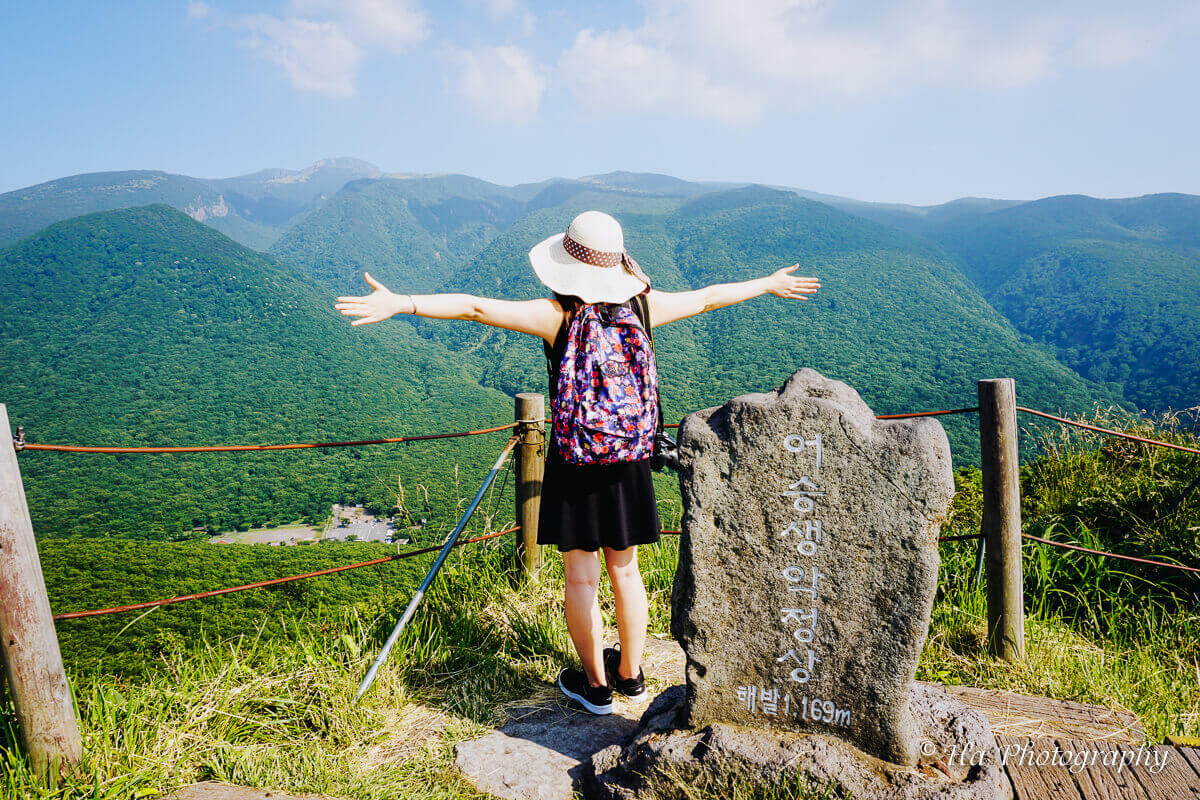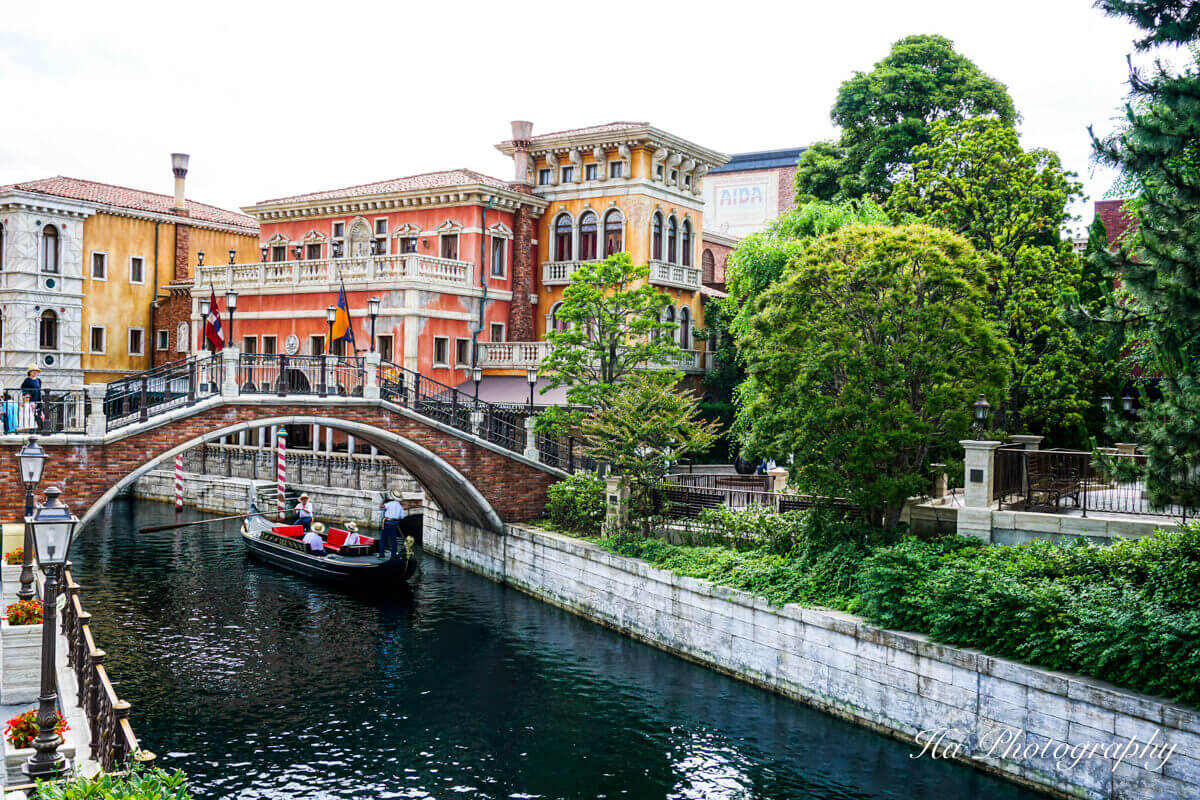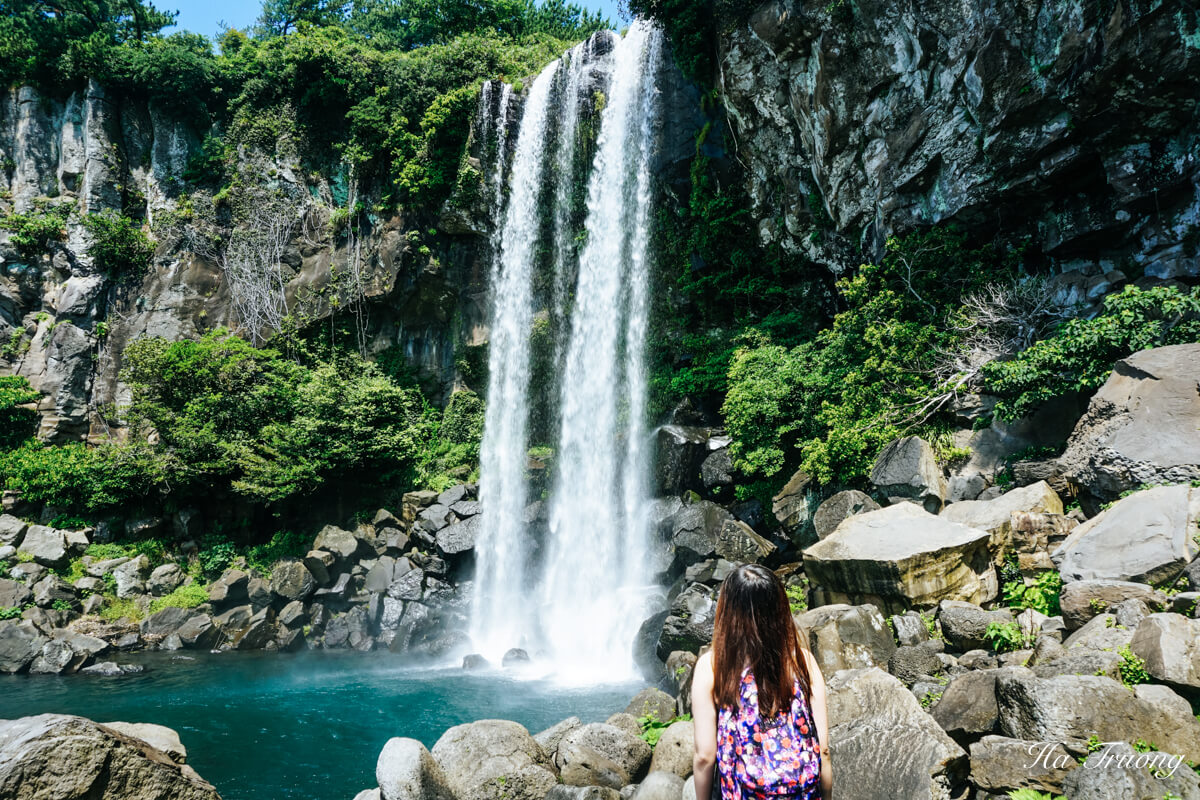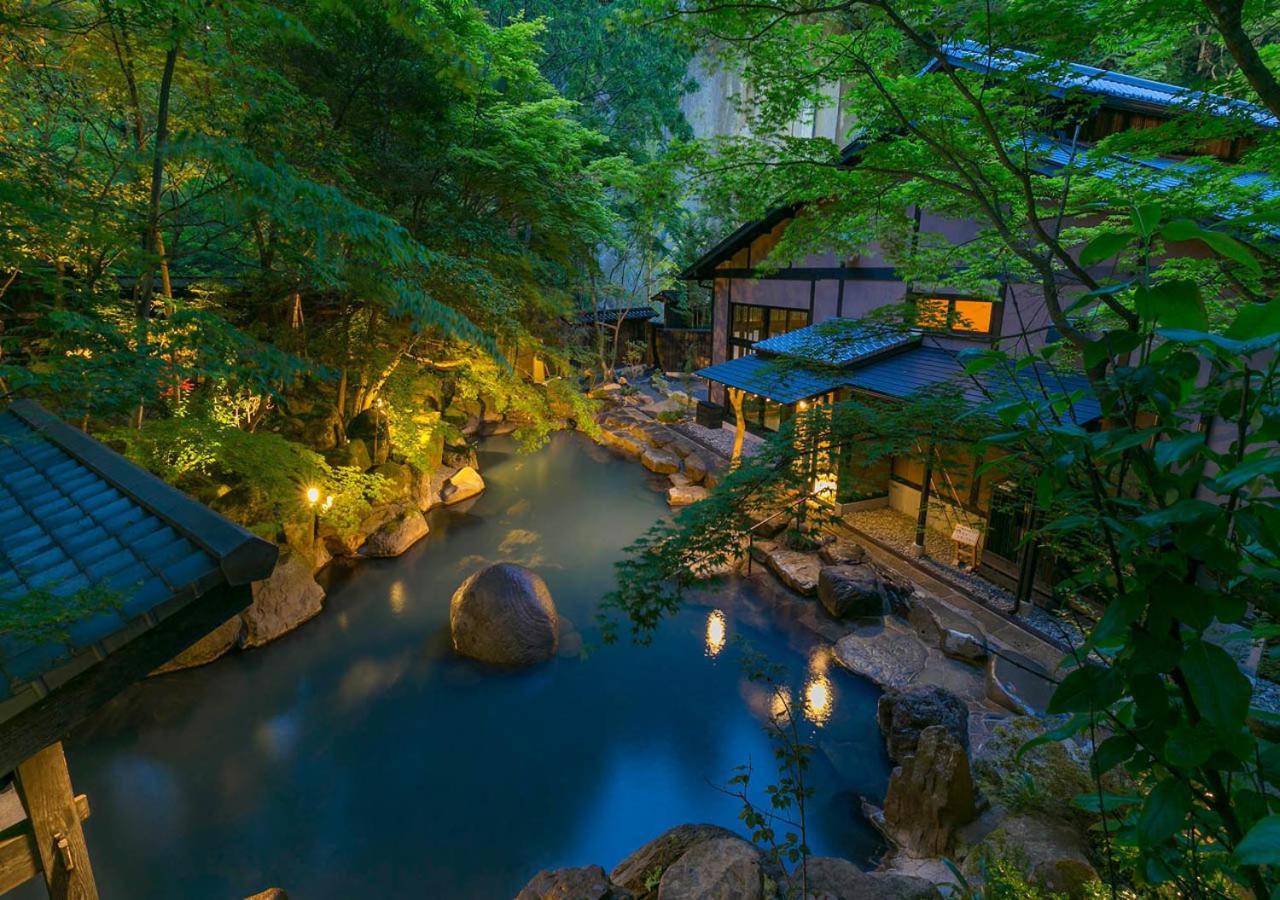A Detailed Guide To Hiking Mount Hallasan, Jeju Korea
Are you planning to hike Mount Hallasan on your trip to Jeju Island, South Korea?
Mount Hallasan is the highest mountain in South Korea, offering a once-a-lifetime experience for adventure seekers. Completely separated from the bustle of city life, hiking Mt. Hallasan is an opportunity to immerse and enjoy the beauty of nature.
In this travel guide, I’ll share useful information to plan a perfect hiking trip to Mount Hallasan, Jeju island.
About Mount Hallasan
With an altitude of 1,950m, Hallasan is the highest mountain in South Korea. It’s also known as Yeongjusan, which translates to “Mountain high enough to pull the galaxy.”
Hallasan Mountain has a unique ecosystem and biodiversity along with volcanic geology and volcanic topography.
For example, you can see the Baengnokdam crater at the top, the steep rocky walls of Yeongsilgi Rock, and about 40 Oreums (the parasitic cone).

Hallasan Mountain occupies the most beautiful spot on Jeju Island as it’s located in the center of this island. All four directions, East, West, South, and North, will lead to this impressive mountain.
With steep cliffs, oddly-shaped rocks, and slopes covered with trees, visiting Hallasan is a must for outdoor enthusiasts. The mountain has seven hiking trails: Gwaneumsa, Seongpanak, Eorimok, Yeongsil, Donnaeko, Eoseungsangak, and Seokguram.
Travel tips
- Guide: Check out my Jeju travel guide for your trip planning.
- Accommodation: I recommend booking your hotel in Jeju in advance. Yeha Guesthouse is an excellent place for a budget stay in Jeju city.
- Transport: Compare the best flight prices with Skyscanner. For your comfort, I recommend booking a private transfer to Hallasan Mountain. Also, don’t forget to check my Jeju bus guide to get around the island easily.
- Tour: You can join a small group hike to Mt. Hallasan. The trip includes the Mt. Hallasan hike (Eoseungsaengak Trail), Cheonjiyeon Falls, and Jusangjeolli cliff.
Mount Hallasan’s opening hours
Before climbing the mountain, you need to check the opening schedule of Hallasan National Park. Please note that it is forbidden to stay overnight on the mountain here.
Hallasan national park trails open at 5 am from May to August and 6 am from September to April.
To ensure everyone has enough time to return before dark, the hiking time is limited and varies with the seasons.
Rangers will stop you from climbing higher if you don’t reach the uppermost shelters by certain times (usually 1 pm or noon in the winter).
Below is the timetable showing when you’re last allowed to hike up the mountain.

Best time to visit Hallasan
The best time to hike Mount Hallasan is in spring and autumn. At this time, the weather is pleasant, and nature is blooming, creating beautiful scenery.
There is limited time for climbing. If you are late, you can’t climb anymore, so you should carefully plan your trip.
You should get up as early as possible, prepare your things, and spend about 1 to 1 hour and 30 minutes to reach the foot of Hallasan mountain by bus or car.
To have enough time to reach the top, you should climb the mountain at the following times:
- Winter – 9 am or earlier
- Spring and Fall – 9:30 am or earlier
- Summer – 10 am or earlier
Longer hiking trails
For longer hiking routes such as Eorimok Trail or Yeongsil Trail, you should start early, at 7 am.
Also, if you choose the longer routes, you shouldn’t add too many other attractions because you won’t be able to visit all of them in 1 day.
Short hiking trails
Eoseungsaengak Trail and Seokgulam Trail only take about 1 hour or 2 hours, respectively, so it’s more relaxing to hike.
You can start either morning or afternoon. Please note that most tours visit Eoseungsaengak Trail in the afternoon, around 3:30 pm.

Places to stay in Jeju
To climb Hallasan mountain, you can book a hotel room in Jeju city or the Seogwipo area.
Jeju city
Jeju City is more vibrant, with great nightlife and eateries. It’s a starting point for most tours.
For a budget stay in Jeju, I highly recommend Yeha Guesthouse, a pleasant stay just a few minutes from the bus terminal. The guesthouse has complimentary breakfasts and free washing machines.
Seogwipo area
The Seogwipo area is quiet and close to Jeju’s South Coast attractions: Jeongbang Waterfall, Oedolgae, and Cheonjiyeon Waterfall.
Thira Hotel is a great place to stay in Seogwipo. It has a good location and offers spacious rooms with an onsite restaurant.
Mount Hallasan hiking routes
Hallasan is divided into seven different hiking trails, but only Seongpanak and Gwaneumsa lead to the summit of Baekrokdam, where the crater lake is located.
All trails at Hallasan Mountain are not more than 10 km long. Those who want a more relaxing and gentle experience of exploring the scenery can choose the routes leading to the back of the mountain.
The Eoseungsaengak and Eoseungsaengak trails are the shortest and least demanding, and you can still see impressive mountain scenery.
1. Gwaneumsa Trail
The Gwaneumsa Trail, a north course of Hallasan, is one of the most scenic trails on this mountain.
This route will take you to Baengnokdam, the summit of Hallasan. It’s 8.7 km and takes about five hours one way. For this trail, you should begin latest at 10 am and reach the uppermost shelters by 1 pm in the summer or 12 pm in the winter.
There is a campsite at the trail entrance, and you can enjoy forest bathing while observing the natural ecosystem.
Please note that Gwaneumsa Trail requires a reservation.
- Gwaneumsa Temple → Summit (Dongneung Peak)
- Distance: 8.7 km
- 5 hours/way
- Difficulty: 4/5, view: 4/4
- Pros: great views along most of the trail.
- Cons: steep, longer, and closed frequently.

How to get to Gwaneumsa Trail
From Jeju Intercity Bus Terminal, take the intercity bus #281 to Seogwipo (25 mins), and get off at Jeju University. Then take the intercity bus #475 (15 minutes) and get off at the entrance of the Gwaneumsa Trail. You’ll see the Gwaneumsa campsite.

2. Seongpanak Trail
Seongpanak Trail, the eastern course of Hallasan, will also take you to the summit, along with Gwaneumsa Trail. It’s the longest Hallasan trail, 9.6km, and takes four and a half hours one way.
This route has the most gradual ascent and a side trail to Sara Oreum Observatory.
It’s recommended to hike Seongpanak Trail in a group. Be careful of wasps in the summer and accidents such as broken legs or physical exhaustion during descending.
Please note that a reservation is required for hiking Seongpanak Trail. You can do it with the Hallasan reservation website.
- Seongpanak → Summit (Dongneung Peak)
- Distance: 9.6 km
- 4 hours 30 minutes/way
- Difficulty: 5/5, view: 4/4
- Pros: It’s not as steep as the Gwaneumsa trail.
- Cons: The views from the trail are not as good as those from the Gwaneumsa trail.
How to get to the Seongpanak trail
From Jeju Intercity Bus Terminal, you can take the intercity bus #281 or #181 bound for Seogwipo (40 minutes). Then, get off at the entrance and walk about 2 minutes to Seongpanak Trail.

3. Eorimok Trail
The Eorimok Trail starts at the entrance of the Eorimok Trail (970m above sea level) in Hallasan National Park to Nambyeok (1,600m above sea level).
It’s a 6.8km trail and takes about 3 hours one way.
You should check the weather information before visiting because Witsae Oreum and Nambyeok are prone to severe weather changes, so you may face risk factors such as fog and lightning.
- Eorimok → Nambyeok Bungijeom
- Distance: 6.8 km
- 3 hours/way
- Difficulty: 3/5, view: 2/4
- Pros: shorter hikes with lovely oak trees and a shallow incline.
- Cons: It doesn’t get you to the top of Mount Hallasan.
How to get to the Eorimok trail
From Jeju City Intercity Bus Terminal, take intercity bus number 240 (35 minutes) toward Jungmun (1100 Road). Then, get off at the entrance of Eorimok and walk for about 15 minutes to reach the Eorimok Trail.
4. Yeongsil Trail
The Yeongsil Trail is a 5.8km trail, and it takes about 3 hours and 15 minutes one way when departing from the Yeongsil Management Office.
If you depart from the Yeongsil Service Area, expect about 2 hours and 30 minutes of hiking.
You can descend by using the Donnaeko and Eorimok trails.
Except for the ridge of Yeongsil Crater (1300m ~ 1550m above sea level), which has a relatively steep slope, most of it is flat terrain and easy to visit.
- Yeongsil → Nambyeok Bungjeom
- Distance: 5.8 km
- About 2 hours 30 minutes/way
- Difficulty: 2/5, view: 3/4
- Pros: short hike along a ridge and past several waterfalls.
- Cons: It doesn’t take you to the top of the Korean Hallasan mountain.
How to get to the Yeongsil trail
From Jeju City Intercity Bus Terminal, take the intercity bus 240 (50 minutes) toward Jungmun (1100 Road). Then get off at the Yeongsil ticket office and walk for about 45 minutes to find the entrance to the Yeongsil hiking trail.

5. Donnaeko Trail
The Donnaeko trail starts at the Visitor Information Center (500m above sea level) in Seogwipo City and to the Nambyeok Junction (1,600m above sea level).
Following the Nambyeok Circulation Route connected to Witse Oreum, you can descend along the Eorimok and Yeongsil Trails.
The Donnaeko trail doesn’t have spring water, so you must bring extra drinking water. Since the Nambyeok Junction area has severe weather changes, you should use the designated trail and visit in a small group rather than an individual.
- Donnaeko Trail Information Center → Nambyeok
- Distance: 7 km
- 3 hours 30 minutes/way
- Difficulty: 2/5, view: 2/4
How to get to Donnaeko trail
From Jeju Intercity Bus Terminal, take the intercity bus #281 to Seogwipo (50 minutes) and get off at Seogwipo Industry Science High School.
Transfer to city bus 611,612 and get off at Chunghon Cemetery Square. Then walk 1km (20 minutes) to find Donnaeko Visitor Information Center.
6. Eoseungsaengak Trail
Eoseungsaengak is one of the shortest trails on Hallasan. This easy hike takes just 30 minutes to hike to the top, starting at the Hallasan National Park Visitor Center. You can join a small group hike to Eoseungsaengak Trail. On this tour, you’ll also visit Cheonjiyeon Falls and Jusangjeolli cliff.
When reaching Eoseungtaeng Oreum, you can view the peak of the Hallasan and Jeju plains.
- Eorimok → Eoseungsangak Peak
- Distance: 1.3 km
- About 30 minutes/way
- Pros: shortest hike
- Cons: It doesn’t take you to the top of Hallasan mountain.
How to get to the Eoseungsaengak trail
From Jeju City Intercity Bus Terminal, take intercity bus number 240 and get off at Eorimok.
Read more: Check out my Eoseungsaengak trail guide if you plan to hike this route. For a hassle-free experience, it’s best to join a tour.

7. Seokgulam Trail
Seokguram Trail is a course frequented by many visitors looking for a light hike.
- Chunghon Memorial Site parking lot → Seokgulam temple
- Distance: 1.5 km
- About 50 minutes/way
How to get to the Seokguram trail
It’s near Jeju City, so you can reach the trail entrance in about 20 minutes by car. You can also take the intercity bus number 240.
From the entrance of Cheonwangsa Temple, walk for about 10 minutes along the forest road to reach the parking lot of the Chunghon Cemetery, where the trail begins. It takes 50 minutes to reach Seokguram temple, 1.5 km one way.
How to choose a suitable Hallasan hiking route
The most popular routes are Eoseungsaengak Trail and Seokgulam Trail. They are both easy and quick trails for hiking.
The Eorimok Trail or Yeongsil Trail is reasonable if you have more time.
For professional climbers with good health, Seongpanak Trail or Gwaneumsa Trail will be challenging enough and take you to the best view of Hallasan Mountain.
Tips: Please note that the hiking time suggested above is for reference only, and you should allocate more time on your trip. You’ll need time to rest, admire the scenery, take pictures, etc.
Do you need a guide for Mt. Hallasan?
There’s no need for a guide as Hallasan hiking routes are very detailed. You’ll see a map, instructions, and signs along the way.
Almost everyone climbs independently, so there is no need to hire a guide. However, hiking with someone is better than walking alone in case of unexpected circumstances and accidents.
What to pack for Mount Hallasan
Depending on the difficulty of hiking routes, the level of preparation is different.
Challenging trails like Seongpanak Trail and Gwaneumsa Trail require professional climbing equipment, while Eorimok Trail and Yeongsil Trail are easier to prepare.
If you travel to Jeju in winter, you need to prepare clothes and climbing equipment more carefully because, at this time, the road is slippery and much more challenging to climb than in other seasons.
In general, here is a packing list for Hallasan.
- Clothes: Sports clothes are the ideal choice for hiking. Eorimok Trail and Yeongsil Trail are easy to go to, and you can wear simpler clothes.
- Bring a jacket because it will be cold at the top
- Hat, sunglasses, and sunscreen
- Sports shoes or specialized climbing shoes.
- Hiking gears for more challenging routes
- Medicine: bandages, insect repellent cream.
- Water and snacks
Mt. Hallasan sightseeing and service fees
Below are the service fees for Mount Hallasan. While it’s free to visit and hike Mount Hallasan, you’ll need to pay for camping and a shower.
- Ticket price to visit Mount Hallasan: free
- Camping fee:
- Small (for 3 people or less): 3,000 won
- Medium (for 4-9 people): 4,500 won
- Large (10 people or more): 6,000 won
- Shower bathroom:
- Adults: 600 won
- Teenagers: 400 won
- Children: 300 won
- Parking fee:
- Two-wheel vehicles 500 won
- Compact cars (under 1,000 cc) 1,000 won
- Mid-size cars (under 4 ton trucks) 1,800 won
- Small bus (11-15 seats) 3,000 won
- Mid-Large bus (over 16 seats / over 4 ton trucks) 3,700 won
Pin it for later!








I have a friend that teaches in South Korea who is currently travelling around the country a little bit during her break, so I’m going to mention this to her because it looks incredible! Hadn’t heard of it before reading your post.
What unique hikes. Your guide is extremely helpful. I travel with young kids so it’s important for us to know exactly what we are getting ourselves into. Thanks for compiling so much useful information on hiking Jeju into one place!
You also have to register for the Gwaneumsa Trail! It was really disappointing because after registering at the support center at the beginning of the trail, they told us we can’t go up the mountain, we have to stop at the shelter. Because you have to latest at the shelter at 1 pm.
We are so disappointed and frustrated and hope you can also write the registration and latest arrival at the shelter on your website. You should be latest at the beginning between 10-10.30 am.
Hi Ha, thank for you blog post. I really appreciate it. Are toddlers/kids (1-2 years old) allowed in Mt. Tallasan, esp. in long trails such as Seongpanak and Gwaneumsa trails? And also on short trails such as Eoseungsaengak Trail? Thank you.
Hi Sydney, I’m not sure about traveling with toddlers for these trails. I recommend contacting the Jeju Tourist Information Center office for permission-related questions. Their office is Lobby, 23 Seondeok-ro, Jeju City.
Hi Ha,
Thank you for sharing the comprehensive information in your post. I have made reservation for Seongpanak Trail however we cannot visit Jeju due to personal reasons. From my reservation or in the VisitHalla.. website, I cannot find the entry to cancel the reservation? Is it only available in Korean web page but not in forgein language page? Many thanks again.
Hi Fan, VisitHalla has the Language setting on the upright corner which you can choose English. I suggest contacting the site which you made a reserve, or you can also contact VisitJeju (Jeju tourism) – they have an online chat!